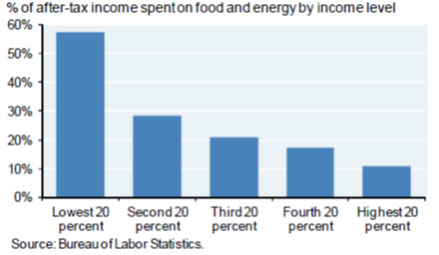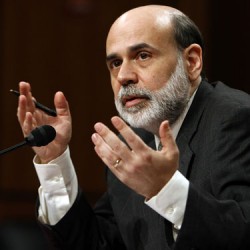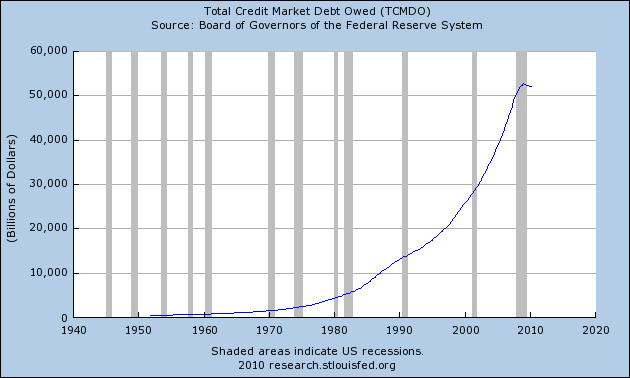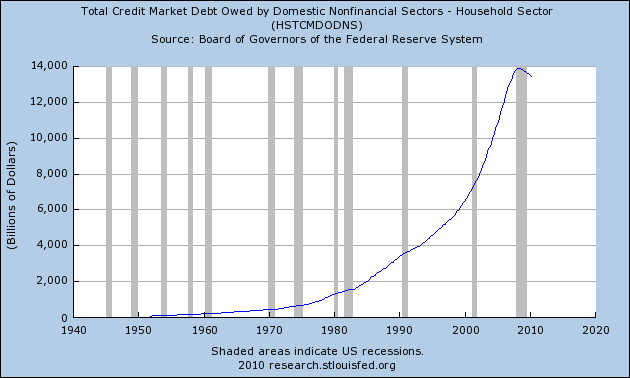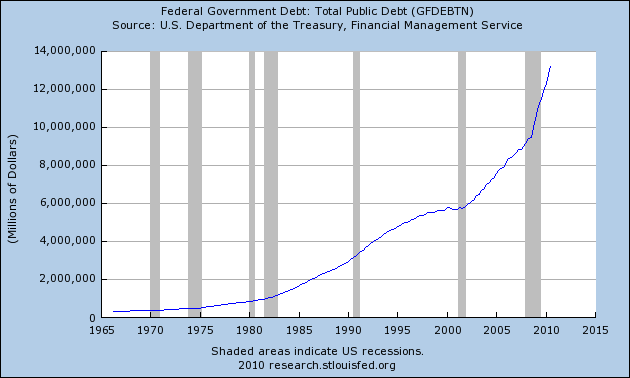 Even as Barack Obama and Ben Bernanke publicly defend the Federal Reserve’s new $600 billion quantitative easing program, top finance officials around the globe are expressing alarm and outrage. But what did Obama and Bernanke expect? “Quantitative easing” is little more than legalized cheating. For a moment, imagine that the global economy is a giant game of Monopoly. Essentially what Bernanke has done is that he has just reached under the table and has slipped another $600 billion on to his pile of money, hoping that the rest of the players will not call him out on it. The rest of the world has heavily invested in the U.S. dollar and in U.S. Treasuries, and this new quantitative easing program is going to devalue all of those holdings. If the Federal Reserve continues to go down the road of monetizing U.S. government debt, other nations are rapidly going to get spooked and will soon refuse to invest in U.S. dollars and U.S. Treasuries. When that day arrives, it is going to cause mass panic in the world financial system.
Even as Barack Obama and Ben Bernanke publicly defend the Federal Reserve’s new $600 billion quantitative easing program, top finance officials around the globe are expressing alarm and outrage. But what did Obama and Bernanke expect? “Quantitative easing” is little more than legalized cheating. For a moment, imagine that the global economy is a giant game of Monopoly. Essentially what Bernanke has done is that he has just reached under the table and has slipped another $600 billion on to his pile of money, hoping that the rest of the players will not call him out on it. The rest of the world has heavily invested in the U.S. dollar and in U.S. Treasuries, and this new quantitative easing program is going to devalue all of those holdings. If the Federal Reserve continues to go down the road of monetizing U.S. government debt, other nations are rapidly going to get spooked and will soon refuse to invest in U.S. dollars and U.S. Treasuries. When that day arrives, it is going to cause mass panic in the world financial system.
Already, investors across the globe are flocking out of the U.S. dollar and into safe investments such as gold and silver. On Monday, gold closed at an all-time record high of $1,403.20 an ounce on the New York Mercantile Exchange, and silver closed at a 30-year high of $27.43 an ounce.
Unfortunately, our leaders seem absolutely clueless about what is really going on. In fact, Barack Obama is very much in Bernanke’s corner. During his trip to India, Barack Obama made it clear that he very much supports this new round of quantitative easing by the Federal Reserve….
“I will say that the Fed’s mandate, my mandate, is to grow our economy. And that’s not just good for the United States, that’s good for the world as a whole.”
This is the exact opposite of what Barack Obama should be doing. He should be demanding accountability from Ben Bernanke and the Federal Reserve. He should be trying to get the U.S. financial system back on some kind of solid footing.
But we all know that is not going to happen. Obama had no problem renominating Bernanke to another term, and Obama has publicly supported him at every opportunity.
Well, if Obama isn’t going to do it, shouldn’t some of our other representatives in Washington D.C. be calling for the resignation of Bernanke? After all, how many chances does one guy get? Bernanke’s record is littered with so much gross incompetence that it makes Wade Phillips of the Dallas Cowboys look like Coach of the Year. The video posted below shows Bernanke reassuring the public over and over and over between 2005 and 2007 that the U.S. economy was in great shape and that we would continue to experience solid growth….
How long is it going to be until everyone wakes up and starts acknowledging that “the emperor has no clothes” and Bernanke is running the U.S. economy into the ground?
At this point, Bernanke has lost virtually all credibility. In 2009, he promised the U.S. Congress that the Federal Reserve would not monetize U.S. government debt, but now that is exactly what is happening.
Most of the top finance officials in other countries realize what is going on, and they are really starting to make their displeasure known. The following are just a few examples of the global outrage that has been expressed about the Fed’s new quantitative easing program over the past few days….
*Xia Bin, an important member of the monetary policy committee of China’s central bank has called the Fed’s new quantitative easing plan “abusive” and is warning that it could set off a global economic meltdown.
*On Monday, Chinese Finance Vice Minister Zhu Guangyao expressed his extreme dismay regarding the Fed’s new quantitative easing scheme….
“As a major reserve currency issuer, for the United States to launch a second round of quantitative easing at this time, we feel that it did not recognize its responsibility to stabilize global markets and did not think about the impact of excessive liquidity on emerging markets.”
*German Finance Minister Wolfgang Schäuble, who has called current Fed policy “clueless”, says that he is absolutely disgusted with the Federal Reserve at this point….
“They have already pumped an endless amount of money into the economy via taking on extremely high public debt and through a Fed policy that has already pumped a lot of money into the economy. The results are horrendous.”
*Luiz Inácio Lula da Silva, the President of Brazil, says that he is incredibly upset about QE2 and that he is going to arrive for the G20 meetings in Seoul ready “to fight”.
*Bloomberg is reporting that at the upcoming G20 meetings, Russian President Dmitry Medvedev is going to “insist” that any future quantitative easing measures be globally coordinated.
*Even some top Fed officials are speaking out publicly against this new round of quantitative easing. For example, Kansas City Fed President Thomas Hoenig recently made the following statement about the new direction the Fed is taking….
“I worry that by pumping in significant amounts of dollars we then build the inflationary pressures for the future, and we do encourage then an easier credit environment that helped create this problem in the first place.”
The Federal Reserve had better hope that the rest of the world does not get scared off from buying U.S. government debt. According to the Wall Street Journal, in order to repay maturing bonds and finance the budget deficit, the U.S. government will have to come up with 4.2 trillion dollars over the next year.
If the rest of the world cuts back on buying U.S. Treasuries, the Federal Reserve is going to find itself with a gigantic mountain of debt that it will be forced to monetize.
So what happens someday when China, Japan, Russia and the major oil producers in the Middle East decide that enough is enough and they are not going to buy any more U.S. debt?
Don’t think it can’t happen – these nations are not stupid and if they realize that the U.S. dollar is going to continually keep falling in value there could be a dramatic move away from U.S. debt.
If the rest of the world quits lending massive amounts of money to the U.S. government, our leaders will be faced with three options. The U.S. government could start trying to operate within a balanced budget (which would crash the economy), interest rates on U.S. government debt could be raised until people would be willing to invest in Treasuries again (which would probably crash U.S. government finances and the economy), or the Federal Reserve could just start monetizing most of the debt on a regular basis (which would likely eventually crash the entire world financial system).
In order for the current world financial system to maintain stability, it is essential for there to be faith in the U.S. dollar and for there to be faith in U.S. Treasuries. Once faith in them is lost, it will only be a matter of time until the world financial system totally crumbles.
This new round of quantitative easing could be the “tipping point” that opens the door to the eventual complete and total collapse of the U.S. dollar. Let us hope that the dollar does not completely fail any time soon, but with jokers like Bernanke and Obama running the show, there is not much reason for optimism.

